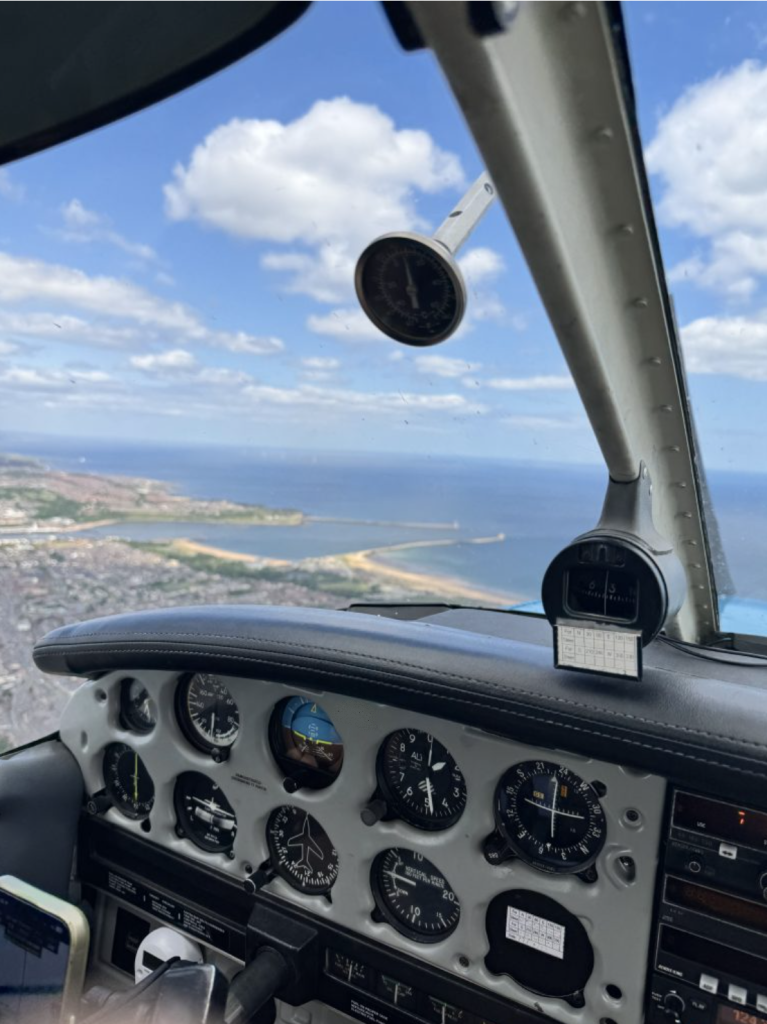Many aspiring flight instructors are unaware of a little-known option: undertaking the Commercial Pilot Licence (CPL) theoretical knowledge exams without enrolling in a full groundschool course.
A formal CPL groundschool typically involves 300+ hours of structured tuition and costs several thousands of pounds. For determined PPL holders looking to move into instruction, that can be a significant barrier. The exempted route offers a cost-effective alternative.
Let’s be clear—this path is not for the faint-hearted. Self teaching requires commitment, drive and a slight hint of lunacy. There are many resources currently available open source on the internet to support learning, the knowledge gained through PPL tuition will certainly help, and the CAA kindly provide a full list of the Learning Objectives that are examined. With focussed energy, it is possible to complete the examinations within a 6-9 month window, subject to being able to find a suitable exam sittings.
1. What the Exempted Route Is
For candidates aiming for an FI(A) certificate who do not need a CPL issued, Part-FCL allows you to sit and pass the CPL theoretical knowledge (TK) examinations without first completing an approved CPL TK course.
Those exam passes:
- Count only for meeting the FI prerequisite.
- Do not qualify you for CPL licence issue.
CAA guidance (FCL.915.FI) states that aspiring instructors who intend to teach the PPL syllabus must have:
“…passed the CPL theoretical knowledge examination, which may be taken without completing a CPL theoretical knowledge training course and which shall not be valid for the issue of a CPL.” – UK Civil Aviation Authority
In practice: You can meet the FI prerequisites more flexibly and cheaply. If you later decide you want a CPL issued, you must then complete an approved CPL TK course (CAA Form 5004 / ATO certificate) and may need to re-validate or re-sit exams so they are valid for licence issue.
Note: A statutory appeal has been submitted to the CAA challenging the requirement for candidates who already passed the exams to resit them if subsequently completing an approved groundschool to progress a CPL application, on the basis that it adds burden without improving safety.
2. Who This Route Is For
- PPL(A) holders building towards FI(A) who want to instruct (initially as FI(R), then ab-initio PPL once restrictions are lifted). You must still meet the usual FI experience requirements—hours, cross-country, instrument time, recent SEP flying, and the pre-entry test.
- Important: Without CPL/ATPL TK passes, an FI(A) may only instruct for the LAPL (and associated ratings). To instruct ab-initio PPL students, you must have CPL-level (or ATPL-level) theoretical knowledge passes.
3. The Exams You’ll Sit (CPL(A) TK)
The CPL(A) theoretical knowledge syllabus includes 13 subjects at CPL level:
- Air Law
- Aircraft General Knowledge (Systems & Instrumentation)
- Mass & Balance
- Performance
- Flight Planning & Monitoring
- Human Performance
- Meteorology
- General Navigation
- Radio Navigation
- Operational Procedures
- Principles of Flight
- VFR Communications
(Full details: CAA Theoretical Knowledge Examinations)
4. How to Book and Sit the Exams (Without CPL Course)
- Register via the CAA e-Exams system
- Go to the CAA Professional e-Exams portal.
- Under “Memberships,” select Exempt Approved Training (EAT).
- Submit SRG1192 Form
- On the form, for Licence Held, enter: “PPL – Exam Application for FI issue only.”
- Follow the exam attempt rules (FCL.025):
- All exams must be passed within 18 months (from the end of the month of your first attempt).
- Maximum 6 sittings and 4 attempts per subject.
- Validity of passes:
- For CPL or IR licence issue: passes are valid for 36 months (when taken with a full course).
- For FI(A) purposes under the exempted route: the results do not expire.
- CPL licence issue later:
- If you later seek a CPL, you must complete an approved CPL TK course and provide the ATO’s course completion certificate (CAA Form 5004).
5. Key Links
- CAA Professional e-Exams Registration: Register here
- CAA Theoretical Knowledge Exams Overview: Exam guidance & rules

